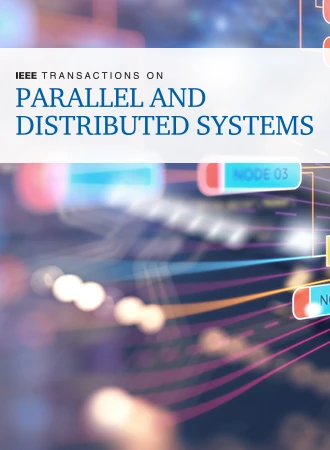Freyr $^+$+: Harvesting Idle Resources in Serverless Computing via Deep Reinforcement Learning
IF 5.6
2区 计算机科学
Q1 COMPUTER SCIENCE, THEORY & METHODS
IEEE Transactions on Parallel and Distributed Systems
Pub Date : 2024-09-17
DOI:10.1109/TPDS.2024.3462294
引用次数: 0
Abstract
Serverless computing has revolutionized online service development and deployment with ease-to-use operations, auto-scaling, fine-grained resource allocation, and pay-as-you-go pricing. However, a gap remains in configuring serverless functions—the actual resource consumption may vary due to function types, dependencies, and input data sizes, thus mismatching the static resource configuration by users. Dynamic resource consumption against static configuration may lead to either poor function execution performance or low utilization. This paper proposes FreyrFreyr$^+$:通过深度强化学习挖掘无服务器计算中的闲置资源
无服务器计算凭借易于使用的操作、自动缩放、细粒度资源分配和即用即付的定价方式,彻底改变了在线服务的开发和部署。然而,在配置无服务器功能方面仍存在差距--实际资源消耗可能会因功能类型、依赖关系和输入数据大小而变化,从而与用户的静态资源配置不匹配。与静态配置不匹配的动态资源消耗可能导致函数执行性能低下或利用率低。本文提出了一种新型资源管理器(RM)--Freyr$^+$,它可以动态地从超额配置的函数中获取闲置资源,从而加速无服务器平台中配置不足的函数。Freyr$^+$ 实时监控每个函数的资源利用率,并检测用户配置与实际资源消耗之间的不匹配。我们为Freyr$^+$设计了具有注意力增强嵌入、增量学习和保障机制的深度强化学习(DRL)算法,以安全地获取闲置资源并高效地加速函数。我们在使用 AWS EC2 的 13 节点 Apache OpenWhisk 集群中实施并部署了 Freyr$^+$ 原型。Freyr$^+$ 在大规模模拟和真实世界测试平台上进行了评估。实验结果表明,Freyr$^+$ 可收集 38% 的函数调用闲置资源,并利用收集的资源加速 39% 的调用。与基准 RM 相比,Freyr$^+$ 将第 99 百分位函数响应延迟降低了 26%。
本文章由计算机程序翻译,如有差异,请以英文原文为准。
求助全文
约1分钟内获得全文
求助全文
来源期刊

IEEE Transactions on Parallel and Distributed Systems
工程技术-工程:电子与电气
CiteScore
11.00
自引率
9.40%
发文量
281
审稿时长
5.6 months
期刊介绍:
IEEE Transactions on Parallel and Distributed Systems (TPDS) is published monthly. It publishes a range of papers, comments on previously published papers, and survey articles that deal with the parallel and distributed systems research areas of current importance to our readers. Particular areas of interest include, but are not limited to:
a) Parallel and distributed algorithms, focusing on topics such as: models of computation; numerical, combinatorial, and data-intensive parallel algorithms, scalability of algorithms and data structures for parallel and distributed systems, communication and synchronization protocols, network algorithms, scheduling, and load balancing.
b) Applications of parallel and distributed computing, including computational and data-enabled science and engineering, big data applications, parallel crowd sourcing, large-scale social network analysis, management of big data, cloud and grid computing, scientific and biomedical applications, mobile computing, and cyber-physical systems.
c) Parallel and distributed architectures, including architectures for instruction-level and thread-level parallelism; design, analysis, implementation, fault resilience and performance measurements of multiple-processor systems; multicore processors, heterogeneous many-core systems; petascale and exascale systems designs; novel big data architectures; special purpose architectures, including graphics processors, signal processors, network processors, media accelerators, and other special purpose processors and accelerators; impact of technology on architecture; network and interconnect architectures; parallel I/O and storage systems; architecture of the memory hierarchy; power-efficient and green computing architectures; dependable architectures; and performance modeling and evaluation.
d) Parallel and distributed software, including parallel and multicore programming languages and compilers, runtime systems, operating systems, Internet computing and web services, resource management including green computing, middleware for grids, clouds, and data centers, libraries, performance modeling and evaluation, parallel programming paradigms, and programming environments and tools.
 求助内容:
求助内容: 应助结果提醒方式:
应助结果提醒方式:


